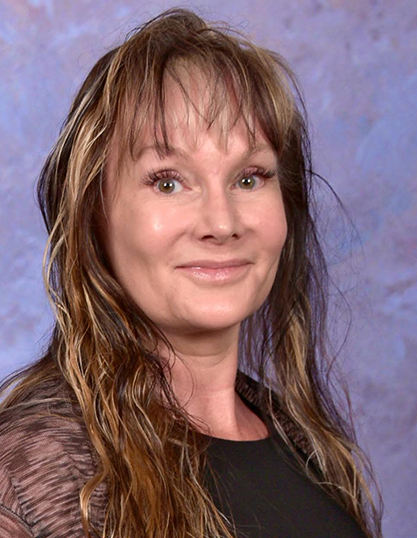How to Buy a Home or Refinance in Retirement
If you’re a senior and considering purchasing a new home or refinancing the one you have, the prospect of such an investment might feel overwhelming. However, at Seniors’ Lending Centre, we know the ins and outs of this process, and it’s actually not a difficult one to complete! There are a few requirements and even opportunities to consider, but our dedicated team is happy to help you make a sound decision.
Today, using our knowledge of mortgages for seniors in Canada, let’s walk you through how to buy a home or refinance in retirement.
Buying a Home vs. Refinancing: What’s the Difference?
Whether you are purchasing a new home or refinancing an existing one, you would need to secure the funds by obtaining a mortgage loan. The key difference between the two is their purpose:
- Purchase mortgages enable you to become a homeowner. Even if you’ve never owned a home or had a mortgage before, you may be able to obtain a purchase mortgage.
- Refinance mortgages enable existing homeowners to change the terms of the original mortgage. You would need to get a purchase mortgage first before you can consider refinancing it.
Conventional Mortgages
If you wish to obtain approval for a traditional mortgage through the bank, you can do so. However, going this route means you need to follow the same lending guidelines as with younger, employed individuals, so it may sometimes be more challenging to get a decent pre-approval amount—usually if your income is insufficient. Despite this, if your pension can cover the costs, you likely won’t be turned down, especially if you have enough savings put aside for a large down payment.
There is no age limit associated with mortgage pre-approval, and it is illegal for any bank to discriminate against senior borrowers.
Pros and Cons of Conventional Mortgages
Compared to other loan options, conventional mortgages have lower interest rates and allow for more flexibility in terms of repayment schedule and terms. In addition, if you have a large enough down payment of 20% or more, you won’t need to pay the CMHC mortgage insurance.
While the older population often has a lifetime of savings or previous home equity to put towards the down payment, getting a mortgage as a senior isn’t always easy. Conventional mortgages come with strict qualification criteria, with credit scores and income requirements that may be difficult for retired individuals to meet. Plus, conventional mortgages do not offer as many assistance programs for seniors as government-back loans do.
Canadian Home Buyers’ Plan (Withdrawing from RRSPs)
Many mortgages for seniors in Canada are approved using funds the borrower withdraws from the RRSPs they have contributed over time—up to $35,000 each and completely tax-free. This is a great way to increase your down payment and drive down the total interest, but you need to repay all the RRSP funds you withdraw before reaching age 71. This is known as the Home Buyers’ Plan (HBP). Learn more about it and how to withdraw these funds.
Pros and Cons of the Canadian Home Buyer’s Plan
Utilizing funds from your RRSPs through the Home Buyers’ Plan allows you to increase your down payment, thus reducing the total loan amount and lowering monthly mortgage payments. This may be especially helpful for individuals nearing retirement and who will likely experience a predictable income reduction in the near future. In addition, withdrawals under the HBP are exempt from taxes, which provides a valuable financial advantage against other down payment options.
When considering withdrawing from RRSPs under the HPB, keep in mind that you will be required to repay all the funds before reaching the age of 71. For senior borrowers, this might mean only a few years, which may not be feasible. Furthermore, without careful management, you will risk reducing your future retirement income.
Refinancing (Borrowing from Home Equity)
Interested in making the most of your retirement? Those dream trips, classic cars, and new adventures are calling, and refinancing your home creates some cash flow to make these opportunities happen. As stated by the Canadian Mortgage and Housing Corporation (CMHC), you can borrow against your home equity if you’re over age 55 with no significant debt. You don’t need to sell your property or move to a lower-cost home in order to obtain it.
Refinancing, in particular, is an easy option, allowing you to borrow up to 80% of your home’s total value. Those funds are then made available to you, ideal for enjoying your golden years to the fullest, with manageable monthly installments between 25 and 30 years. Learn more about home equity loans in Canada.
Pros and Cons of Refinancing Your Home
Refinancing your home will provide you with instant access to cash from your equity, allowing you to fund your retirement expenses, travel, or investments. This means you can receive additional funds without the need to sell your home, freeing you from the hassle of shopping for a new residence and moving a lifetime’s worth of assets.
Keep in mind, however, that by refinancing your home, you will be increasing your overall debt burden, which may affect your long-term financial goals. In addition, this would reduce your overall home equity, which would impact the potential inheritance for heirs.
CHIP Reverse Mortgages
An alternative to refinancing is applying for a reverse mortgage from one of the three national lenders: Homequity Bank’s CHIP, Equitable Bank reverse mortgage and Bloom reverse mortgage. Available exclusively to seniors aged 55 or older, borrowers on this plan don’t have to undergo credit checks or meet minimum income requirements. Along with that, there are no monthly repayments to worry about—you can pay as little or as much as you can afford—so it’s one of the best options when looking at reverse mortgages for seniors in Canada! Note that the amount provided depends on the location of your property, its value, and your approximate age, among other factors. See all the important details regarding reverse mortgages, or download our free guide.
Pros and Cons of Reverse Mortgages
Reverse mortgages are truly one of the best options among reverse mortgages for seniors. With this type of loan, seniors can get approved with no minimum credit requirements and no minimum income requirements. In addition, there are convenient and flexible repayment options according to their financial situation.
Nonetheless, as with any other reverse mortgage option, all will reduce the equity in your home over time if you choose not to make any optional interest payments, potentially harming your long-term financial goals and limiting inheritance.
Buying a Home vs. Refinancing: What Should You Do?
Whether you should be buying a home, refinancing it, or obtaining a reverse mortgage, depends on your goals and financial situation. If you want to change your residence— whether to downsize or move closer to your children and grandchildren—you would need to take out a new mortgage when buying a home. On the other hand, if you are in need of additional funds, you could refinance your existing residence or take out a reverse mortgage from one of the three national providers: Homequity Bank’s CHIP, Equitable Bank’s reverse mortgage and Bloom’s reverse mortgage.
This is just the tip of the iceberg when it comes to refinancing and mortgages for seniors in Canada—our team can clarify all the important details and even present alternative options! To get started, reach out to us at Seniors’ Lending Centre today for a free, no-obligation quote.




